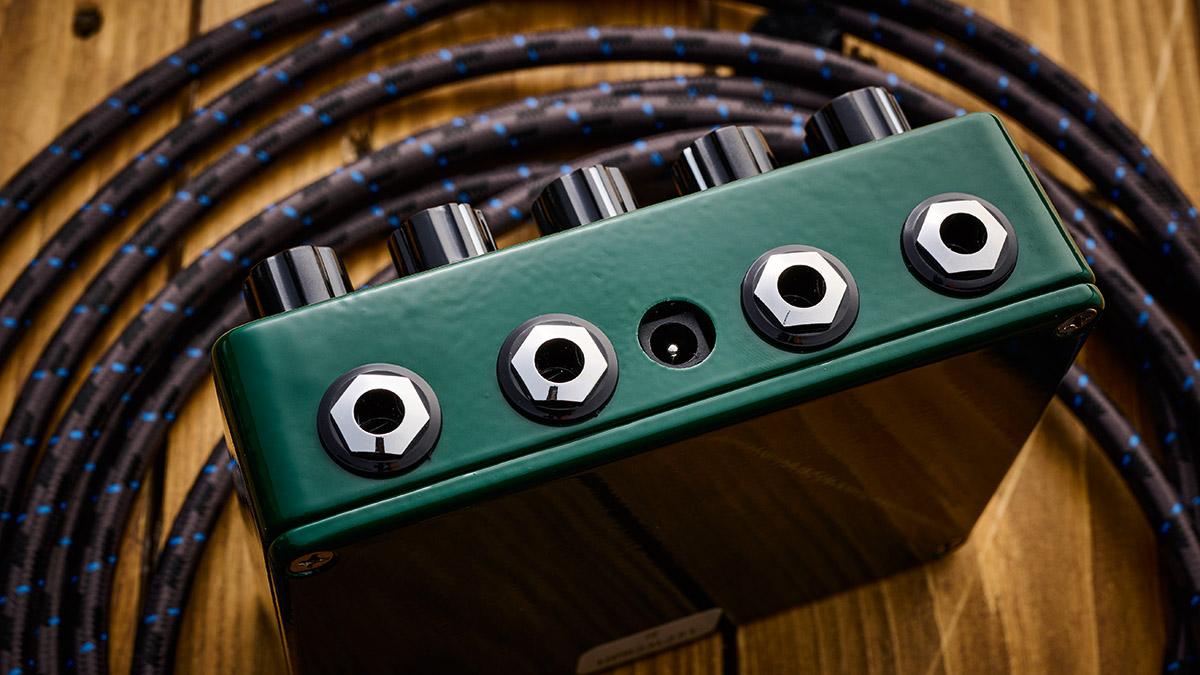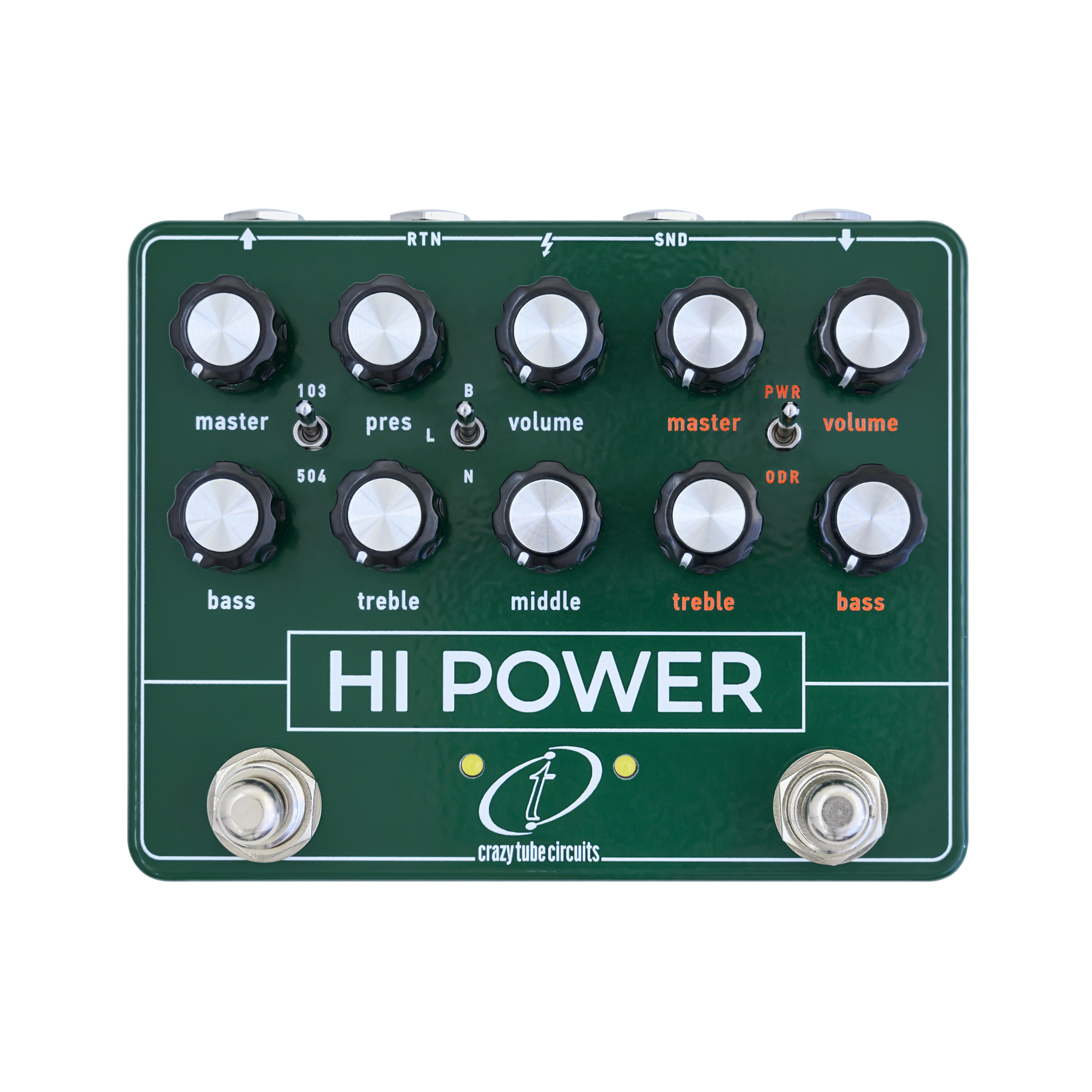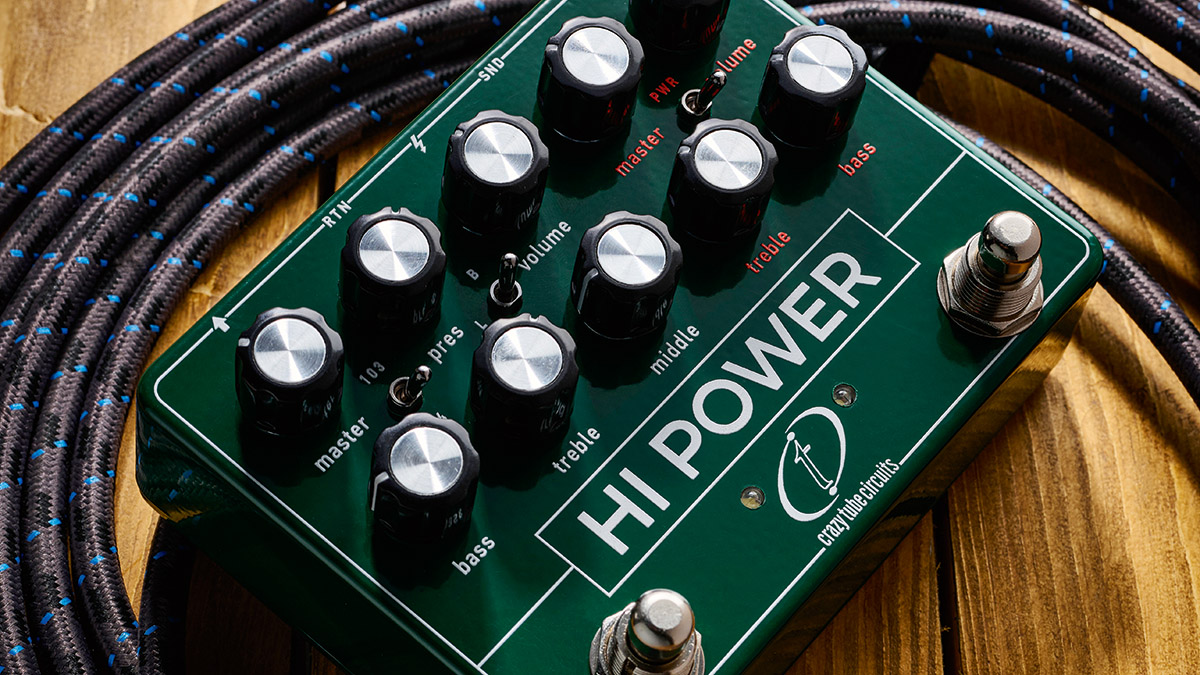Guitar World Verdict
Another nicely thought-out addition to Crazy Tube Circuits’ twin-pedal range, the Hi Power has an obvious appeal to Gilmour fans, but from a wider perspective it combines two classic tonal flavours that are rare in pedal form.
Pros
- +
Two respected vintage sounds in one pedal.
- +
Effects loop.
- +
Plenty of tweakability.
- +
Compact size for a twin-footswitch pedal.
Cons
- -
The Hiwatt side may need a fair bit of dialling in for optimum use with your own amp.
You can trust Guitar World
Crazy Tube Circuits has a penchant for creating pedals that pair classic guitar amp and drive pedal sounds. The latest is the Hi Power, which offers tones from Hiwatt amps with a recreation of the Colorsound Power Boost pedal, a combination that David Gilmour was known to use back in the day, notably on the Wish You Were Here album.
The two sections of the pedal are independently footswitchable and the boost comes before the amp, but there is added flexibility with a send and return loop between the two.
The Boost section has a toggle switch that lets you choose between the sound of the 18-volt Power Boost or the slightly later nine-volt Overdriver version. A Volume knob sets the gain and there’s a Master knob for output volume, plus Bass and Treble knobs with which you can temper the boost/drive, which comes with a glassy top-end.
There are various degrees of boost and drive to be had, although higher reaches of the Volume knob add a fuzzy edge to proceedings until it gets raucously fuzzy up full. It’s here you’ll notice the most difference between PWR and ODR settings, the latter being smoother and not quite as rampantly in-yer-face.

The amp section also has similar Volume and Master knobs, but you get a full quartet of amp-style EQ knobs. A toggle switch lets you choose Normal channel, Brilliant channel or a combination of the two working together for added gain.
Starting with the recreation of a DR103 100-watt amp, there’s really good dynamic response as the amp reacts to your playing across a range of authentic-sounding Hiwatt tones from clean to everything-on-10 crunch, the Master knob building in the sound of power amp distortion.
You also get the choice to toggle switch to a DR504 50-watt version, which eschews the former’s high headroom and greater dynamic response for more compression and gain.
Both sides of the pedal work fine independently, but together the boost seems to be the perfect complement to the amp, pushing it into some familiar clear yet smooth lead tones.
Verdict
Another nicely thought out addition to Crazy Tube Circuits’ twin-pedal range, the Hi Power has an obvious appeal to Gilmour fans, but from a wider perspective it combines two classic tonal flavours that are rare in pedal form.
Specs

- PRICE: £235 (approx $300)
- ORIGIN: Greece
- TYPE: Drive pedal
- FEATURES: True bypass
- CONTROLS: Master, Volume, Presence, Bass, Treble, Middle, internal EQ and Volume Boost trimmers, 103/504 switch, B/L/N switch, H Bypass footswitch, Master, Volume, Bass, Treble, Buffer/True switch, PWR/ODR switch, C Bypass footswitch
- CONNECTIONS: Standard input, standard output, standard send, standard return, standard footswitch jack
- POWER: 9V DC adaptor (not supplied)
- DIMENSIONS: 122 (w) x 95 (d) x 53mm (h)
- CONTACT: Crazy Tube Circuits
Trevor Curwen has played guitar for several decades – he's also mimed it on the UK's Top of the Pops. Much of his working life, though, has been spent behind the mixing desk, during which time he has built up a solid collection of the guitars, amps and pedals needed to cover just about any studio session. He writes pedal reviews for Guitarist and has contributed to Total Guitar, MusicRadar and Future Music among others.
“I said, ‘Let’s get Hendrix to play on it.’ His manager said, ‘Jimi’s playing shows back-to-back.’ So we got Jimmy Page”: The hit ’60s single that was supposed to feature Jimi Hendrix… but ended up with Jimmy Page
“It was tour, tour, tour. I had this moment where I was like, ‘What do I even want out of music?’”: Yvette Young’s fretboard wizardry was a wake-up call for modern guitar playing – but with her latest pivot, she’s making music to help emo kids go to sleep
Unlocking the power of 7th chords: expand your guitar chords beyond the basics












